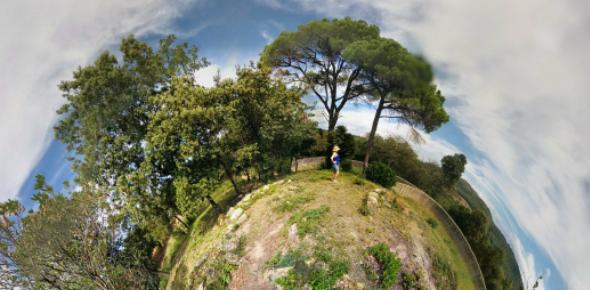
The opportunity to make real and lasting change has never been greater. But we all need to act, and act now.
As if it weren’t clear enough, 2021 has given us plenty of reasons to act. Dramatic flooding in the UK, Germany, Uganda and Bangladesh, wildfires in Greece and Australia, extreme heat in the northwest United States and Canada – the list of extreme weather events just grows and grows. We know we need to transition to a net zero world. But is it possible to make a rapid transition? Right now?
Climate scientist Dr Emily Shuckburgh, Director of Cambridge Zero, is in no doubt. If we all work together – not just governments, but individuals, businesses, charities, everyone – we can make deep, meaningful change, now. “This decade – the 2020s – is the one in which we must act,” she says. “The goals of the landmark Paris Agreement of 2015 are firmly in focus: emissions halved by 2030; net zero achieved by 2050; the temperature rise kept to well below 2 degrees, with an ambition to keep it below 1.5 degrees. But that’s just the start. We all need to play our part in turning those ambitions into action – and do it in a just and fair way.”
Renewable future within grasp
Take Professor Sir Richard Friend at the Department of Physics, who says that large-scale transition to renewable energy is now financially viable. “We know it’s going to work. As recently as a decade ago, many of us were feeling quite disconsolate that we had a serious problem and no affordable solution, but now the renewable future is within our grasp. Solar costs have fallen by a factor of 10 in the last decade, and in many parts of the world, solar is now the cheapest form of electricity generation. If the right investments are made, to bring both generation and storage to scale, switching to renewable-only energy generation is a fully viable option. This was not expected.”
“Cheap renewable energy allows solutions to many other hard-to-solve problems.” - Professor Richard Friend
A bold mix of policies
Indeed, over in Land Economy, Professor of Climate Change Policy, Laura Diaz Anadon, is examining the role of the electricity sector in helping to decarbonise other parts of the economy. Policy focused, her group is examining how everything from R&D investments to regulation and fiscal incentives can deliver not just emission reductions but also wider social goals such as just energy transition and local economic development.
“n order to get politicians to be brave enough to put a radical policy in place, they need to know they will not be punished later in terms of votes.” - Professor Laura Diaz Anadon
Costs and investments
Environmental economist Dr Matthew Agarwala, project leader of the Wealth Economy project at the Bennett Institute for Public Policy, has been examining the practical trade-offs of transition – and what the solutions might look like. “A ban on internal combustion engine sales will support a rapid transition in personal transport, for example, but it needs to run alongside investment in a standard charging infrastructure. Phasing out gas boilers has to be accompanied with financial mechanisms which put green alternatives within reach of everyone, not just the rich. And even with green tariffs, incentives, rebates and grants, heat pumps are still out of reach for most people.”
“The returns are getting higher and higher because the urgency is getting greater and greater” - Dr Matthew Agarwala
Reasons to be cheerful
Across every sector, rapid transition requires partnership, which is one of the reasons Shuckburgh says that when she is asked if there are reasons to be cheerful, “the answer is a wholehearted yes. I have found a huge amount of energy and enthusiasm. Wherever I go, and whoever I talk to, there’s always a real and building sense of people wanting to get involved and help.”
“The challenge is huge, but so is the opportunity” - Dr Emily Shuckburgh
Full original University of Cambridge article.
Image credit: Jason Veal

